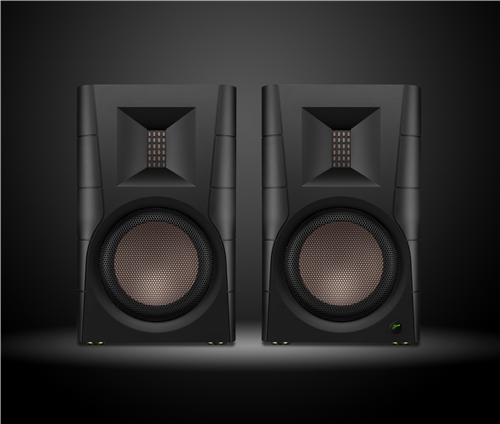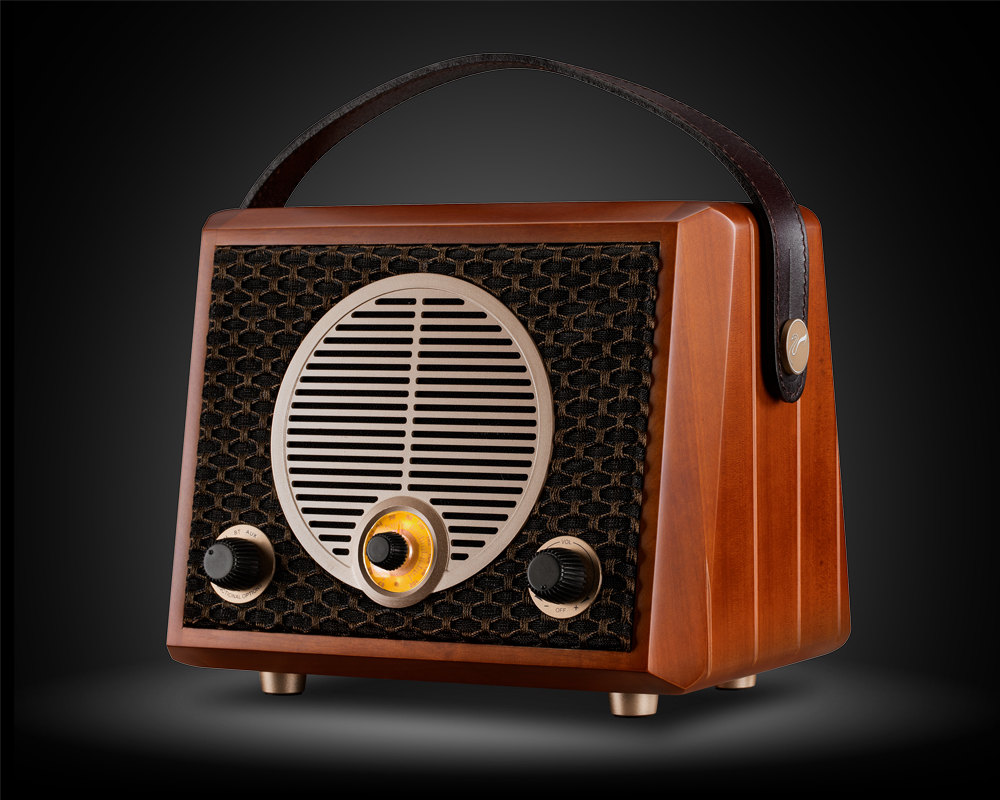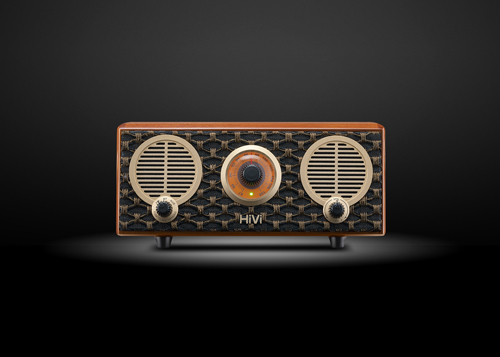Time and space - the development history of Swans and the world's loudspeakers
Since human beings have dreams, we have been working hard, looking forward to one day leaving those sounds of nature, hiding them in our arms, and even playing them repeatedly. This process from hope to trial to finally getting what you want is the process of human beings gradually exploring and growing in the exploration of electricity and sound.
Electrostatic speakers:
In order to better tell the story of the history of human electroacoustics, we will start with the "telephone" that first transmitted human voices to the distance. More than a hundred years ago, on February 14, 1876, Alexander Graham Bell filed one of the most important patents in history for the "telephone". This invention allows human voices to be transmitted farther than shouting, and human beings have since understood the conversion relationship between sound and electricity, and have been enjoying it ever since.
Alexander Graham Bell (1847~1922)
Bell and his invention
early telephone design
In order to better playback the recorded sound, in 1910, S. G. Brown separated the driving force from the diaphragm and invented the 'armature' armature earphone.
Balanced Armature Headphones:
In 1910, Baldwin invented the 'balanced armature' balanced armature earphone. The armature earphone is a U-shaped magnet with a movable iron piece (armature) set up in the middle. When the current flows through the coil, the armature will be magnetized and the magnet will attract and repel, and at the same time drive the diaphragm to move. This kind of design is low cost, although the effect is not good, but it is also an epoch-making invention at the time, and this technology is mostly used in telephone receivers and small earphones.
Balanced Armature Headphones
In terms of technology for recording sound, in 1917 Wente and Thuras designed the condenser microphone.
Condenser microphone designed by Wente and Thuras
By the mid-1930s, electrostatic speakers were introduced based on the principle of condenser microphones. In the early 1950s, the American C. V. Bocciarelli proposed the 'constant charge' constant charge law. P. Walker independently developed the same theory during the same period and applied it to the design of the famous Quad electrostatic loudspeaker.
The basic principle of electrostatic speakers is Coulomb's law. Usually, a plastic diaphragm and an inductive material such as aluminum are vacuum vaporized. The two diaphragms are placed face to face. The other piece will induce a small current, and the sound will be produced by pushing the air through the mutual attraction and repulsion. Due to the light weight and small vibration dispersion of the electrostatic monomer, the electrostatic speaker works in the middle and high frequency bands, and the sound quality is light and detailed, full of characteristics, and it is easy to obtain clear and transparent mid and high frequencies. However, its efficiency is not high, the sound pressure output is low, the dynamics are small, and the cost is relatively expensive.
Electric speakers:
At the same time as Bell, different loudspeaker types were proposed. As an amateur interest, on January 20, 1874, Ernst W. Siemens (founder of the Siemens & Halske company) patented a prototype electrodynamic loudspeaker that placed a voice coil with a support system in a magnetic field in order to keep the vibrating system in place Axial movement. At that time it was mainly used in the field of relays rather than loudspeakers. On December 14, 1877, Siemens applied for a patent for the horn. A parchment paper was attached to a moving voice coil as a sound radiator. The parchment paper could be made into an exponential cone shape. This was the first horn in the phonograph era. type.
Electric speaker prototype
In 1898, Oliver Lodge patented the first practical electrodynamic loudspeaker, which moved a voice coil in a magnetic gap between inner and outer circular pole plates. Like many inventions, this great invention was way ahead of its time. This invention determines the structure of 99% of modern dynamic loudspeakers today.
Oliver Lodge
After another 25 years, in the 1920s, radio broadcasting appeared. C. W. Rice and E. W. Kellogg published an epoch-making paper 'New Non-Horn Drivers' detailing the direct radiating loudspeaker, and the $250 Radiola 104 loudspeaker designed using this theory took the United States by storm.
Radiola 104 speakers
Over the past fifty years, the fundamentals of electrodynamic loudspeakers have not changed, only design details and components have been improved. The frequency response range, dynamic range and other aspects of older products have made great progress. Electric speakers have become the mainstream in the current market due to their simple structure, excellent sound quality, low cost and high dynamics.
Horn Speaker:
The horn loudspeaker originated from the phonograph. In 1928, Wente and Thuras produced their high-efficiency horn-type speaker receiver. The principle of the horn-type speaker is that the diaphragm works by pushing the air at the bottom of the horn. Because the sound resistance is large, the efficiency is very high. However, because the shape and length of the horn will affect the sound, it is not easy to reproduce low frequencies. Today, high-efficiency horns are mainly used in professional sound reinforcement.
horn speaker
Ribbon speakers:
During the development of the above-mentioned speaker technology, people began to understand that the ideal transducer should use a thin diaphragm diaphragm that can pass electric current, and people began to conceive the ribbon speaker.
The first ribbon speaker patented
In January 1923, Schottky and Gerlach of Siemens Halske patented the first ribbon speaker. It installs a horizontal wave-shaped pure aluminum film between the two poles of the magnet. The wave-shaped pure aluminum film can reduce the longitudinal hardness and reduce the resonance frequency.
In 1931, Olson and Massa produced the ribbon microphone.
Ribbon speakers are mainly used in middle and high frequency bands. Because of their flat frequency response curve, extremely high high frequency upper limit, and very good transient effect, they can easily form linear sound sources.
Although the history of human electro-acoustics is so tortuous and complicated, there are indeed many excellent and innovative electro-acoustic speakers emerging today. In fact, these innovative speaker designs have made many of the best electro-acoustic scientists of the last century rack their brains.
In 1997, HiVi (Canada) vaporized and etched 0.005mm aluminum circuit onto the high-strength Kapton film, and used NdFeB magnets to form a plane matrix magnetic field push-pull drive, which completely improved the traditional pure aluminum ribbon speaker with low diaphragm strength. , Need to be equipped with impedance transformer, low input power, short life and other congenital shortcomings.
http://www.swanspeaker.com/drivers
http://hiviresearch.com
Swans R1 and other magnetic field ribbon speakers
In 2001, Swans developed a professional sound reinforcement ribbon speaker R2pro with a sensitivity of up to 103dB! And launched the world's first wide radiation angle multi-unit professional system Pro1808! Officially introduced ribbon speakers into the field of professional sound reinforcement.
Swans professional sound reinforcement with ribbon speaker R2 pro
In 2003, Swans developed the world's first 2-Way Mid-High Range Ribbon Coaxial Driver S1 (2-Way Mid-High Range Ribbon Coaxial Driver). This is a genius design. It cleverly combines the diaphragm and the ring of the electric speaker. With this design, audio manufacturers can produce higher quality speakers, because such coaxial The mid-high frequency speakers have a very flat frequency response from the mid-frequency to the high-frequency and excellent music texture. It is definitely a rare speaker!
Swans two-way annular belt coaxial mid-high frequency loudspeaker S1
In 2005, Swans developed the world's first three-way ribbon coaxial full-range speaker Trinity6 (3-Way Full Range Ribbon Coaxial Driver). This is a large speaker unit with a woofer voice coil up to 3 inches in diameter! It combines the advantages of traditional diaphragm and Swans belt coaxial unit, which can make the frequency response of a unit very wide, from low frequency to high frequency. Trinity6 has become a perfect sound generator in a sense, the frequency playback range spans the full frequency band, and the coaxial sound is coaxial. It can be said that the birth of Swans Trinity6 means that the history of human electro-acoustic development has ushered in a new page!
Swans three-way ribbon coaxial full-range speaker Trinity6
Since Swans developed the equal-magnetic-field ribbon speaker in the last century, Swans has been the world's largest equal-magnetic-field ribbon speaker manufacturer, and has provided various electro-acoustic products for many world-renowned brands. In order to further extend the low frequency playback, Swans developed a new type of subwoofer exciter in 2005, which was placed under the foot seat of the listening sofa to directly feel the ultra-low frequency vibration of the earth shaking.
Electroacoustic has changed human life and the future of human beings. We expect that more electroacoustic converters will be invented in the future and change the way of human entertainment, so that the sounds of nature can truly stay in the arms of human beings.




